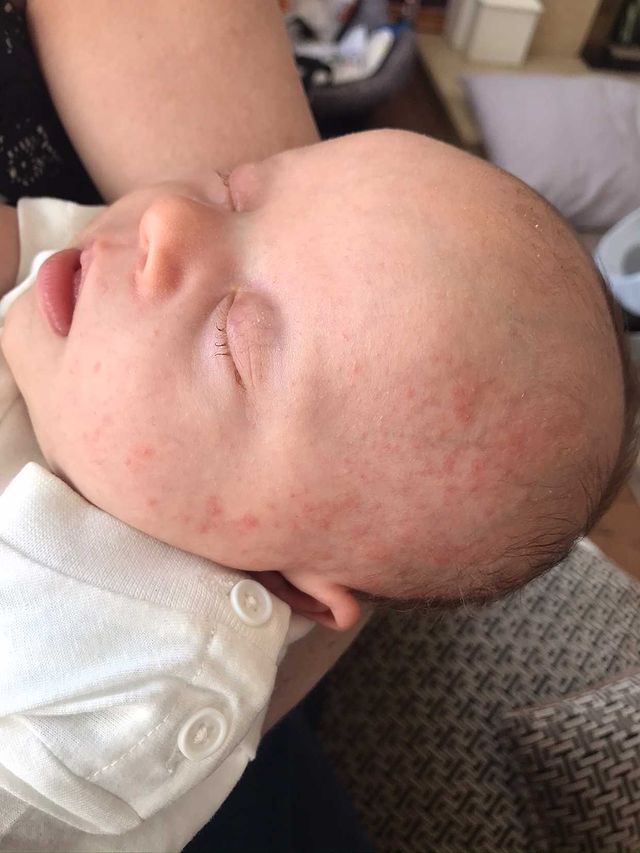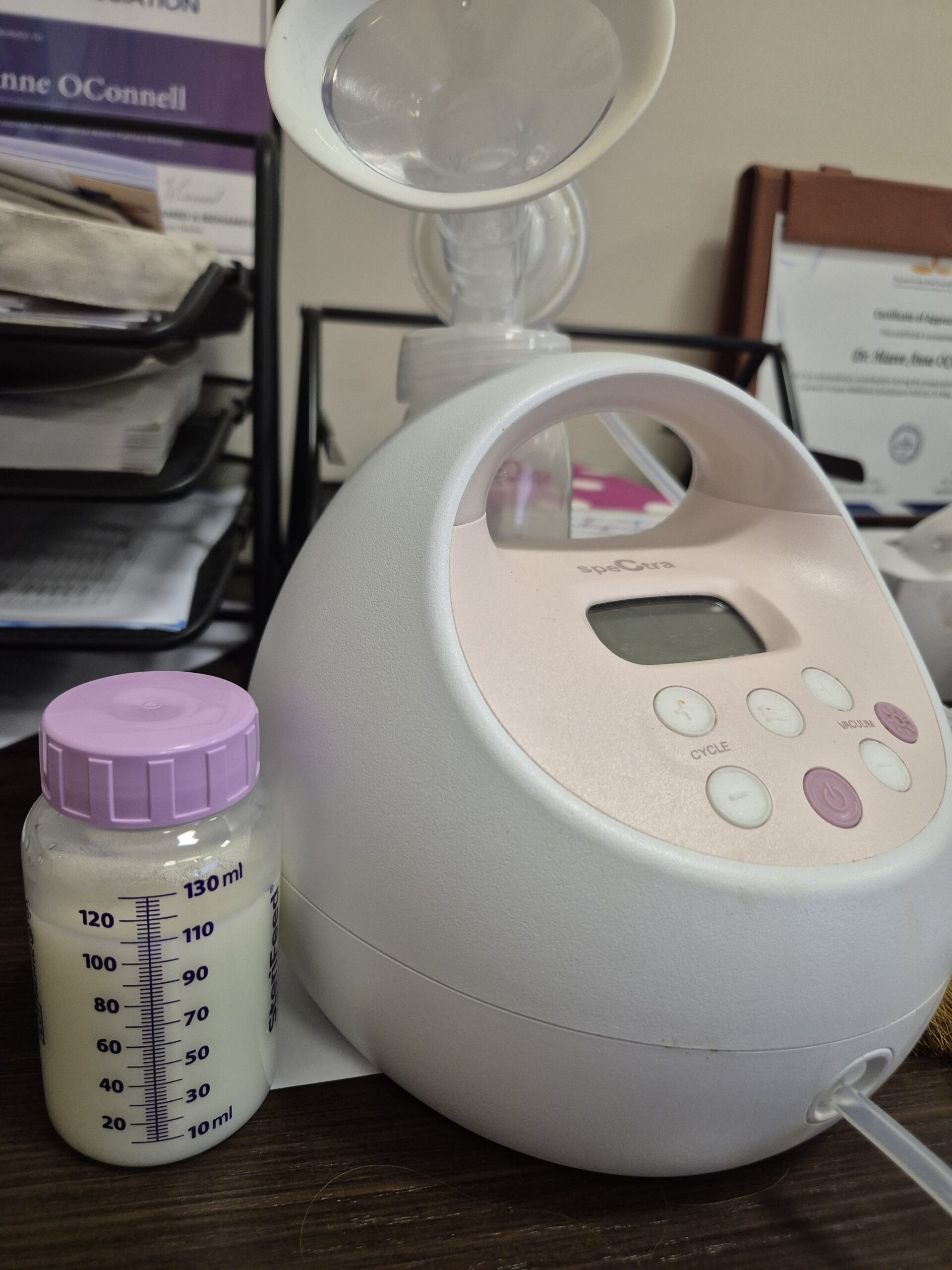Cows milk protein allergy (CMPA) is a common allergy amongst infants but mainly those who are introduced to formula within the first 4-6 months. It’s far less likely for an exclusively breastfed baby to have CMPA, but not impossible.
Exclusively breastfed babies develop CMPA as a result of milk proteins from products in the lactating parents diet which passes through to the breast milk. Only around 0.5% of exclusively breastfed babies are diagnosed with CMPA compared to 7.5% of formula fed infants.
Signs of CMPA
A baby with cow’s milk protein allergy can experience a wide range of symptoms which may vary in mild, moderate, or severe reactions. These can include:
- Frequent vomiting
- Diarrhoea or constipation
- Blood in stool
- Iron deficiency anaemia
- Atopic dermatitis (itchy, dry and cracked skin)
- Swelling of lips or eyelids
- Runny nose
- Chronic coughing or wheezing
- Persistent distress/colic.

Can a baby with CMPA still be breastfed?
In short, Yes!
The lactating parent will need to cut out dairy from their diet in order to be able to continue feeding. Improvements may be seen in as little as 3 days but may take up to 6 weeks for dairy to fully leave the milk. There are many resources available to help the parent remove dairy from their diet and a supplement may also be needed.
There is usually no clinical/medical need for a child to be introduced to specialised prescription formula and can continue to receive breastmilk whilst the elimination process from the parents’ diet takes place.
There is usually no clinical/medical need for a child to be introduced to specialised prescription formula
Is CMPA overdiagnosed?
You may be surprised to hear that between 2006 and 2016 the prescription rates of specialist formula milk for infants with CMPA increased by nearly 500%. NHS spending on these products increased from £8.1m to over £60m PER YEAR. These are all figures reported in a BMJ study by Chris van Tulleken.
Between 2006 and 2016 the prescription rates of specialist formula milk for infants with CMPA increased by nearly 500%
It is also very interesting to note that epidemiological data gives no indication of such a large increase in true prevalence and there are extensive links between the formula industry and the research, medical education and public awareness around CMPA. In fact, Nigel Rollins from the World Health Organisation (WHO) agreed that it is “reasonable to question whether these prescription and spending increased reflect a true increase in prevalence of CMPA.”
Further to this in 2020 researchers from Imperial College London found that cow’s milk allergy guidelines for doctors were rife with conflicts of interest. Three of the guidelines it analysed were directly supported by formula manufacturers or marketing consultants, and eight in 10 guideline authors reported a conflict of interest with formula manufacturers. They also concluded that the advice was especially inappropriate for breastfed infants who are not directly consuming cow’s milk and risked undermining confidence in breastfeeding.
It wouldn’t be unreasonable then to assume CMPA is being overdiagnosed due to a huge conflict of interest. This is all serving to line the pockets of formula manufacturers and negatively affecting breastfeeding rates.
What’s needed for a true CMPA diagnosis
Many children will exhibit a lot of the symptoms listed above and quite often an elimination diet is suggested to ‘see if it helps’ which can then mean dairy is removed and coincidentally things seem to improve for the child.
This could simply be that baby’s digestive system has matured a little, baby has outgrown the 4th trimester so more settled in their new world etc and doesn’t actually confirm the CMPA diagnosis.
It also has to be said that being dairy-free can have a huge negative impact on the lactating parent and can be rather restrictive. In some cases it can spell the end of a breastfeeding journey unnecessarily.
A true CMPA diagnosis can only be made if the lactating parent removes all dairy from their diet, symptoms observed and then the reintroduction of dairy to see whether symptoms return.
Sources
Assessment of Evidence About Common Infant Symptoms and Cow’s Milk Allergy
Disclosure: Please seek the help of a medical professional should you need it whilst breastfeeding. The information and references within this guide were accurate at the time of writing. Boobingit is not responsible for any factual inaccuracies post-publishing. The personal views and opinions are those of the author and not those of boobingit.


















